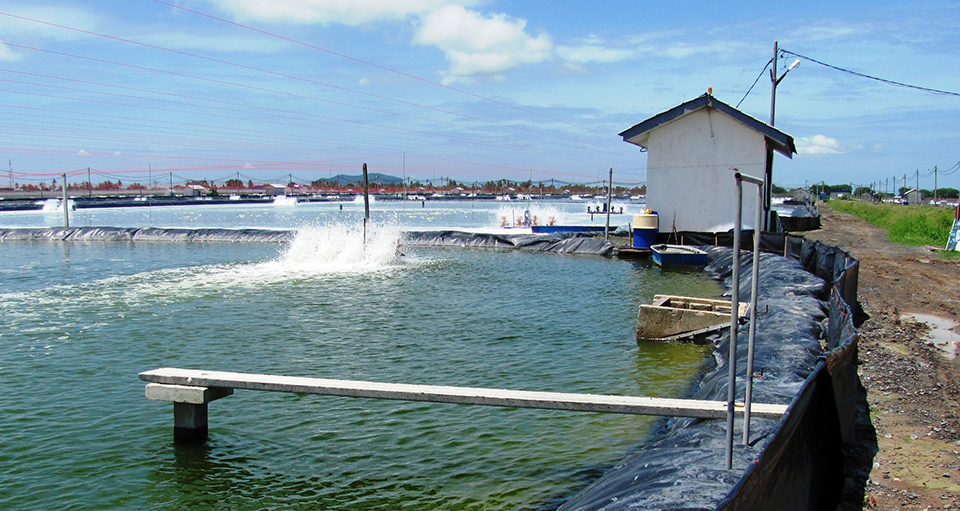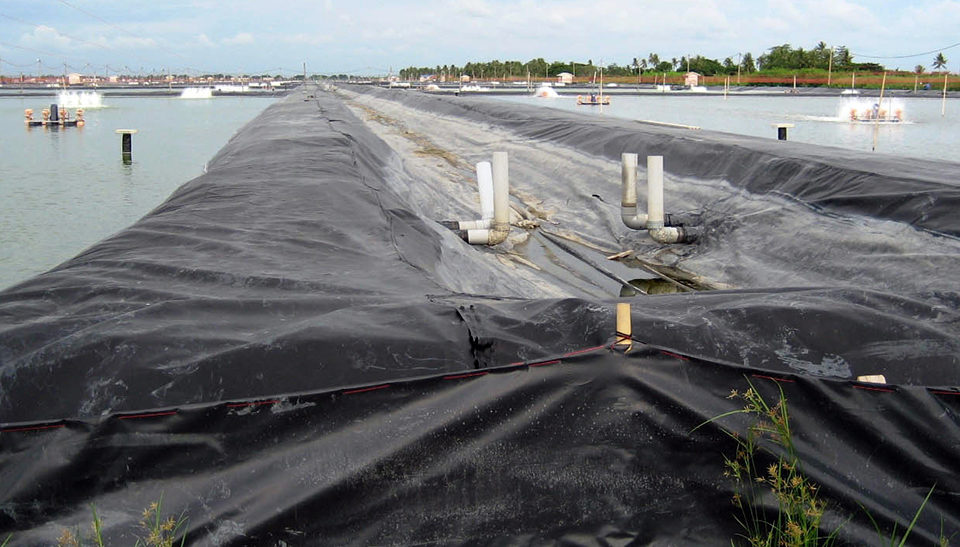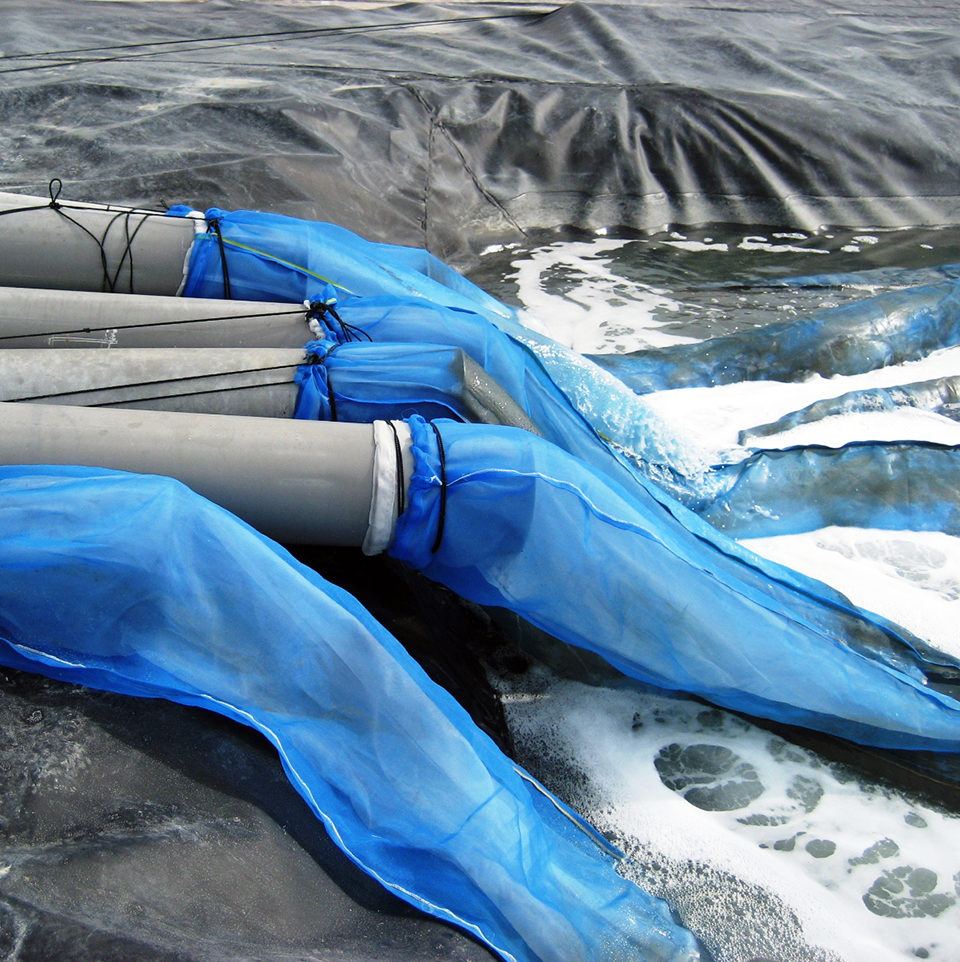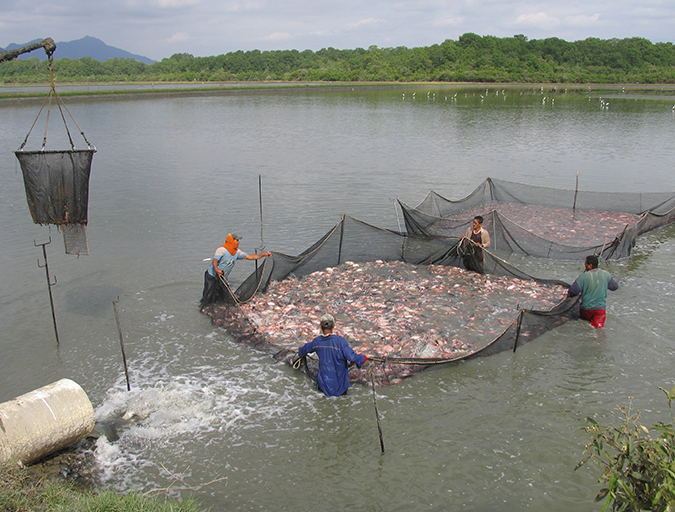Planning, prevention minimize effects of viral outbreaks

Success or failure in shrimp aquaculture often depends on how successfully viral outbreaks can be prevented and controlled. Most farm locations in Asia are not viral-free, so the facilities must be able to operate amid viral threats.
Biosecurity has been applied to control viruses since the introduction of Litopenaeus vannamei to Asia in 2002. Biosecurity starts with quality farm design and is followed by biosecure system operation. With proper design, operation and training in place at farms, viral issues can be minimized.
Virus character
Understanding the character of the problematic virus is the most important factor in its control. In the case of white spot syndrome virus (WSSV), which devastated the shrimp-farming industry for decades, the virus is known to be active in free water for 72 hours. If it can also be active in recently dead shrimp and remain dormant in fresh frozen shrimp. WSSV can then become active once back in a favorable environment. Adults and larval-stage crabs and crustaceans are known carriers of WSSV. Birds were found to spread the pathogen by picking up diseased shrimp from affected ponds and dropping them in other ponds and farms.
In general, WSSV attacks early in the culture period, before day 45 if from water. Another environmental factor that plays a major role is the weather, especially continuous rainy and cold conditions. It is now well-known that temperatures below 26 degrees-C cause farms to be prone to viral outbreaks. When this happens, it is of utmost importance not to stress the shrimp.
Farm design, construction
Farm designs needs to align with biosecure operation. Modular systems in which the incoming seawater is treated in reservoir ponds before use in culture ponds are an effective design. Water from one source for the modules needs to pass through at least two treatment ponds before flowing into the inlet canal.
All water inlets and outlets need to be totally secured without leakages. Pond liners of high-density polyethylene or concrete increase biosecurity. To prevent viral carriers from entering the modules, crab fence and bird scare lines need to be installed. To achieve culture carrying capacity, a central drain system is required.
Postlarvae, water treatment
In culture operations, only specific pathogen-free postlarvae should be used. Stocking density must be in line with energy inputs and system size to avoid stressing the shrimp in ponds. Make sure postlarvae quality is maintained by checking for standard sizing and that gills are well developed.
Minimal water exchange should be applied in culture systems, using only treated water. Water treatment involves physical, chemical and aging methods to eradicate viral particles and viral carriers. All water inlets must be covered with 250-µ netting to filter out crustaceans and larvae entering culture ponds.
To confirm that all carriers are eradicated, chlorine or other approved chemicals are applied in reservoirs and culture ponds. The water is then aged for a minimum of 72 hours to disintegrate viral particles. Water exchange should be minimized during operations to minimize the possible introduction of viral particles.
Pond water management
Postlarvae stocking density and energy use in culture ponds need to be calculated based on the pond construction and system applied. Aeration strategies need to be worked out to keep pond water dissolved oxygen at uniform levels by operating throughout the day and night while also considering energy costs.
To increase the carrying capacity of culture ponds, sludge that accumulates on pond bottoms needs to be removed by siphoning through a central drain pipe. Siphoning normally starts from day 40 to 50, depending on pond management. Culture ponds can be siphoned two to three times weekly for a maximum of two hours at a time.

Human, equipment control
Another important factor is effective control of human traffic and equipment use, since these vectors can often carry viruses. Human control applies to pond operators as well as laboratory technicians. Every pond needs to have its own equipment for water sampling. If required to share equipment such as cast nets, care must be taken to sterilize the nets before and after use.
Only designated pond operators should handle samples and equipment. If required, samples can be taken to the laboratory for further analysis.
Quarantine, biosecurity
In the case of a viral outbreak, a quarantine protocol needs to be followed strictly to prevent the virus from spreading to other ponds or farms. As soon as a pond is suspected of being under viral attack, the pond must be quarantined with signs and other measure to prevent entrance to the pond area. Make sure all inlet and outlet gates to and from the pond are securely closed.
If found positive for a virus, the pond must be chlorinated with a higher dosage than normal as soon as possible. Do not waste time waiting for a polymerase chain reaction report. All dying or dead shrimp must be collected and burned or buried. Stop operating all aeration equipment, but do not take it out of the pond. Leave the pond water standing for at least seven days before discharging.
Human traffic needs to be controlled in the quarantined area. All samplings for shrimp and environmental analysis must be suspended to prevent spreading to other modules or ponds. A special team needs to be assigned to implement the quarantine protocol.
Biosecurity awareness is essential for all staff at farms. There is no way to know when a viral attack will occur, so education through seminars or brief meetings for all levels at farm sites is crucial.

(Editor’s Note: This article was originally published in the November/December 2010 print edition of the Global Aquaculture Advocate.)
Now that you've reached the end of the article ...
… please consider supporting GSA’s mission to advance responsible seafood practices through education, advocacy and third-party assurances. The Advocate aims to document the evolution of responsible seafood practices and share the expansive knowledge of our vast network of contributors.
By becoming a Global Seafood Alliance member, you’re ensuring that all of the pre-competitive work we do through member benefits, resources and events can continue. Individual membership costs just $50 a year.
Not a GSA member? Join us.
Author
-
Nyan Taw, Ph.D.
Blue Archipelago Bhd.
T3-9 KPMG Tower
8 First Avenue, Persiaran
Bandar Utama, 47800 Petaling Jaya
Selangor, Malaysia
Tagged With
Related Posts

Health & Welfare
A comprehensive look at the Proficiency Test for farmed shrimp
The University of Arizona Aquaculture Pathology Laboratory has carried out the Proficiency Test (PT) since 2005, with 300-plus diagnostic laboratories participating while improving their capabilities in the diagnosis of several shrimp pathogens.

Health & Welfare
A holistic management approach to EMS
Early Mortality Syndrome has devastated farmed shrimp in Asia and Latin America. With better understanding of the pathogen and the development and improvement of novel strategies, shrimp farmers are now able to better manage the disease.

Responsibility
A look at various intensive shrimp farming systems in Asia
The impact of diseases led some Asian shrimp farming countries to develop biofloc and recirculation aquaculture system (RAS) production technologies. Treating incoming water for culture operations and wastewater treatment are biosecurity measures for disease prevention and control.

Responsibility
Addressing safety in Latin America’s tilapia supply chain
Over the last decade, the experience gained by many tilapia farmers combined with proficient programs implemented by local governments have significantly improved tilapia production in various Latin American countries like Colombia, Mexico, Ecuador and other important tilapia producers in the region.



